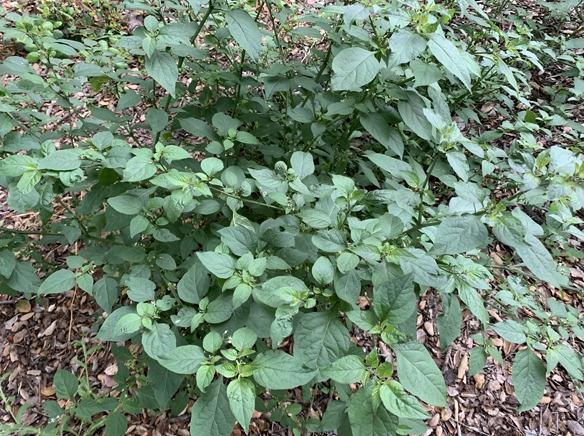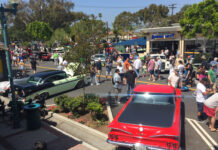By Joe Lazzari
Part of an ongoing series about the Seal Beach National Wildlife Refuge.
The phrase, “What’s in a name?” might bring you joy, anticipation, concern or fear, or the feeling of curiosity. For many of us we knew without thinking the terms associated with our careers or life choices. Retirement arrives, and many of us look to ways that might fulfill a desire to learn new things and provide a way to stay involved with family or community. Many of us also have lifelong hobbies or interests and we seek ways to grow knowledge in those fields. For some of us, those environments in which we learn can be found in our own backyards.
Solanum Americanum is Latin for American Black Nightshade. This annual perennial plant has spread around the world and is native to North and South America with a major concentration in central and coastal southern California. Depending upon its stage of development it is a fascinating plant to observe their star-shaped white flowers in the summer, followed by their green fruits that mature into dark berries, the shade of the night sky.
The name Black Nightshade conjures an image of danger, possibility of poison, something used in a devious fashion. At least that was my perception of this plant upon first observing it in our Native Garden. The past heavy rains combined with soil disturbance resulting from our garden maintenance has facilitated a suitable space in which this plant can flourish.
Depending upon the source, scientists have determined that the plant is toxic to humans and animals if the leaves or berries are ingested.
Exposure to this native plant along with others found within our natural environments provides a window into the past as well as into the future of what our habitat is today and what it may look like tomorrow.
What are the benefits and disadvantages of this plant to its presence in gardens, crops, wilderness areas and where does it thrive?
A plant with toxic tendencies is not to be feared. Nightshade is a fascinating plant as are Urtica dioica, Rosa californica, Ribes californicum and Opuntia littoralis.
These will make their presence known should you rub against them. Nightshade, the California coastal rose, gooseberry and the prickly pear may seem dangerous, yet have captivating histories and applications in our world. Join us on a tour as we explore our local treasure Seal Beach National Wildlife Refuge.
Conducted by Friends of Seal Beach National Wildlife Refuge, the End of Month tour provides you with a glimpse into the world of wildlife and plants and learn of the challenges facing our local habitats. Meet the volunteers who support the US Fish & Wildlife Service in striving to maintain a small slice of what once was a pristine and welcoming natural world.
Tour reservations may be made at 562-596-1024.
Friends of Seal Beach NWR is a 501 (c) (3) non-profit organization (Tax ID# 95-4116679).
Joe Lazzari is a member of Friends of Seal Beach National Wildlife Refuge.












